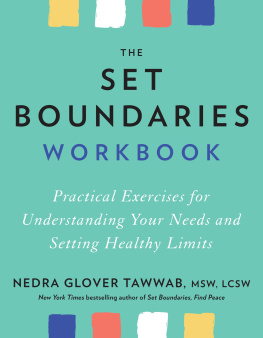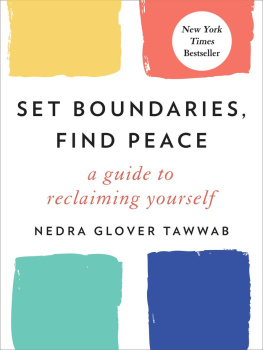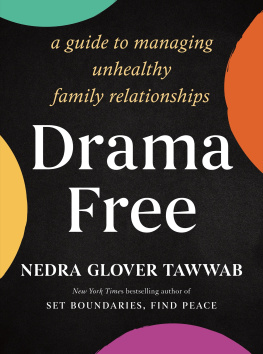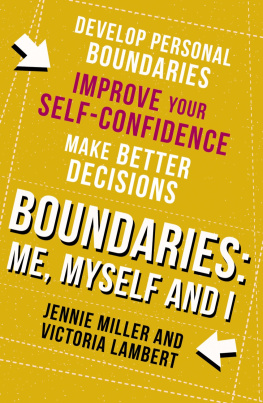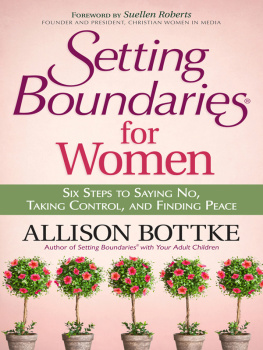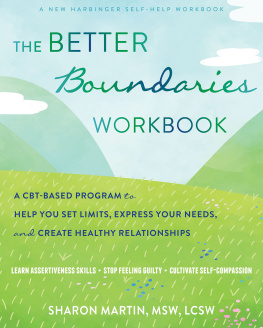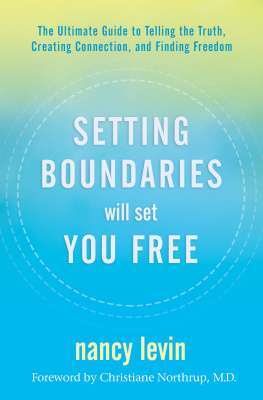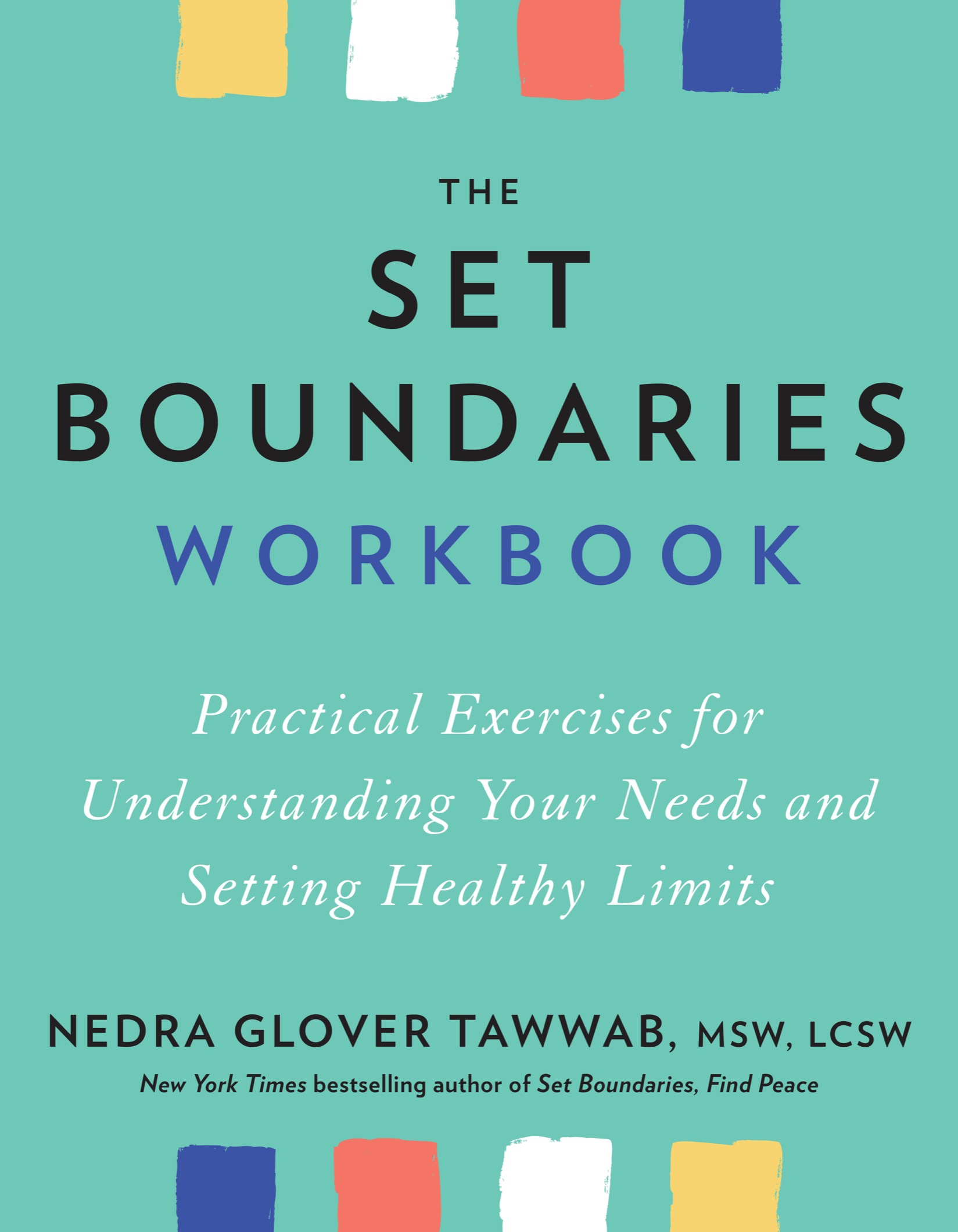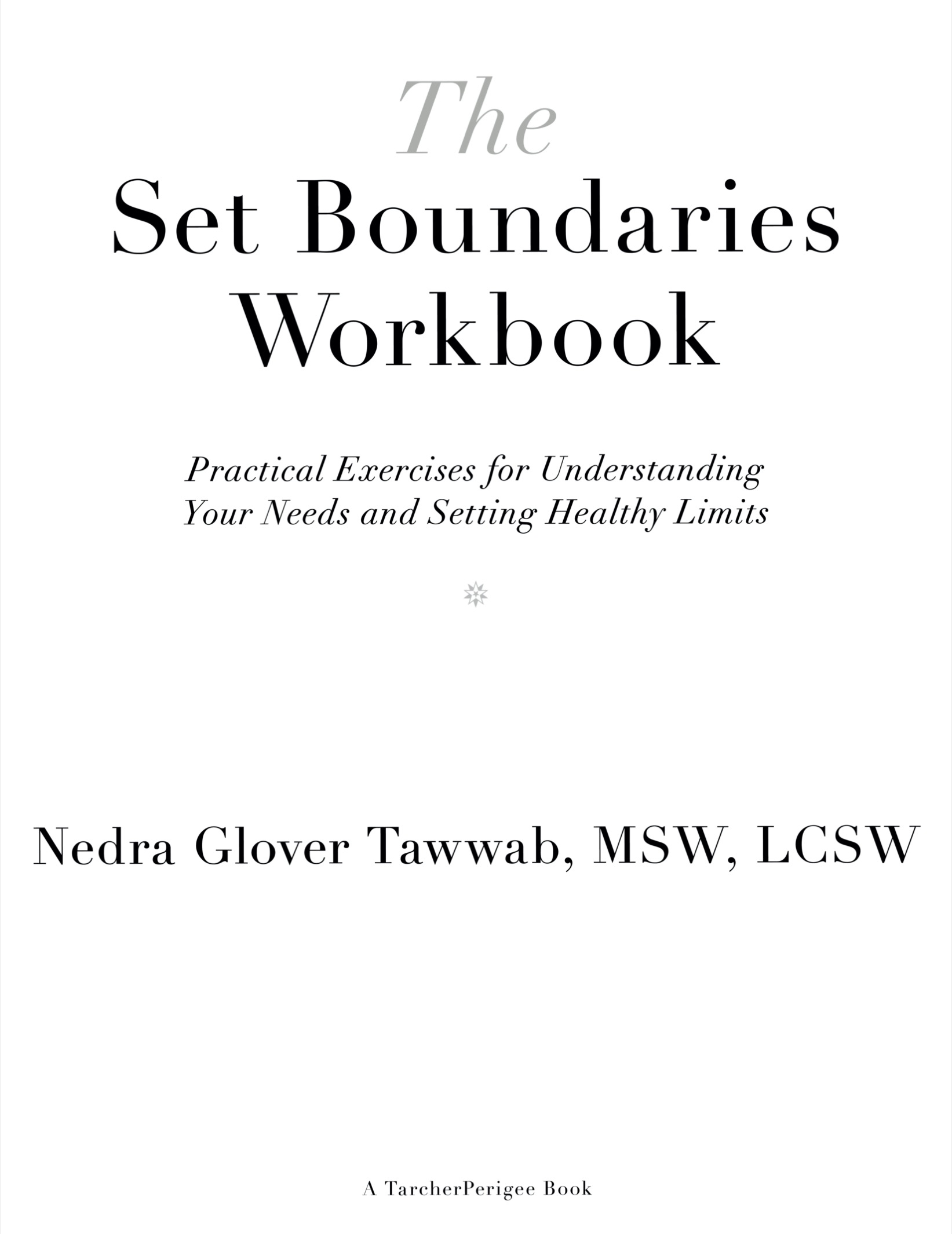Is therapy for everyone? We may not all have access to therapy, or the resources or the desire to go, but we can all benefit from the insights discovered through therapy. In 2017, when I started using Instagram to share information about relationships, mental health, and healthy living, I did so to make the tools for healing and for growing more accessible.
Like therapy itself, therapeutic tools can also be helpful. This book is such a tool, and you can use it on your own or in conjunction with a licensed professional. At any time while reading this book, if the content feels too heavy, please pause. If you cant shake the heaviness, take it as a sign to seek therapy, as you may need more support.
Introduction
Because Im a therapist, people often assume Ive mastered setting boundaries. I havent. We cant master something thats a continual practice. I cannot master brushing my teeth, for example. It will be something I do over and over, day after day. I have gotten better at brushing my teeth, and you can get better at practicing boundaries. With practice, you will get better at noticing when they are needed and at executing them.
In my first book, Set Boundaries, Find Peace: A Guide to Reclaiming Yourself, I shared my expertise based on fourteen years as a therapist and what I know about boundaries. The book is filled with information about what you need to know. We can know better and not do better, however, because it can be hard or seem impossible to change. This workbook will help you apply what you know to make real, positive changes.
Ive always known when things didnt feel right. I knew that something was wrong in my relationships, but whenever I tried to fix it, Id receive pushback, belittling, or shaming. How dare I want something different?
In college, when it became paramount for me to implement limitations with others, I had no words for what I was trying to do. With the help of a therapist, I discovered that I was setting boundaries. She reassured me that it was a healthy thing to do.
Its daring to live a boundaried life.
Its brave to run the risk of others becoming upset with you.
It takes courage to use your voice.
Even through fear, you can set boundaries.
Even through guilt, you can set boundaries.
This workbook is intended to help you:
Practice setting limits and expectations in your relationship with yourself and others.
Work through your feelings of discomfort and guilt about setting and maintaining boundaries.
Understand what prevents you from advocating for yourself with others.
Improve the way you communicate your boundaries.
Integrate boundaries as a continuous way of being.
The Set Boundaries Workbook is intended to be a continual resource. Even after youve completed this book, you will need to practice setting and maintaining boundaries. When you struggle to set a new boundary or want to refresh your skills, come back to this book.
The Need for Practice
I love talking to people, and its my job to listen. But its when my clients and people in my community begin to act on what weve talked about that real change occurs. Likewise, when we read, we may increase our knowledge, but knowledge is of little use unless we put it into practice. For your life to change, its important to apply what you know. Practice does not make perfect, but it will make you better. Toward that end, this workbook is an application manual.
In keynotes and workshops about boundaries, I like to leave people with the ability to start the work today. Each time you open this workbook, you can practice using its tools in your daily life.
There is no hurry, of course. Each of us changes in our own time. But the longer you go without acting, the longer you sit with the discomfort of unhealthy boundaries.
Before I had healthy boundaries, I would:
Wait for people to figure out what I needed
Allow people to borrow money that I couldnt afford to loan
Easily say yes to things I didnt have time to do
Spend money without considering my finances
Allow people to borrow items and not return them
Offer to help in cases where I did not have the capacity
Do what people wanted without considering my needs
Tell people what was best for them
Make myself available to people when I didnt have the time
Often feel resentful toward people for asking me to help and then mad at myself for feeling that way
How to Use This Book
Reflection
Take the time to consider what is said. Let the words sit with you. Allow them to penetrate your memories, both positive and negative. Dont avoid the urge to feel what your body needs to move through this book. Pause and take a breath, if necessary, but come back. Dont abandon your healing.
Journaling
Journaling is an important step in processing your thoughts. It can be done with pen and paper (my preference), in the note section on your phone, using a diary app, in a document on your computer, or via audio or video recordings. Try a few methods to see what works best for you. Comfort is vital for consistent journaling. You must find your unique rhythm. Throughout this book, if you find yourself feeling uncomfortable, journal through it. At the end of each chapter, space is provided for you to write through your feelings about the text and exercises you completed.
Note: If your trust in journaling has been violated (e.g., someone has read your journal without your permission), consider using your phone or computer and locking the document. Despite your concerns about being violated, its healthy to get your feelings out and a vital part of healing.

